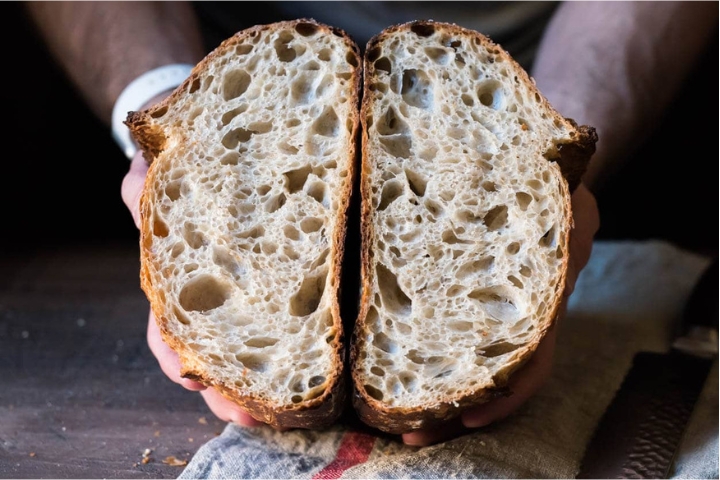Sourdough bread has been a staple in many cultures for centuries, offering a unique flavor and texture that sets it apart from other types of bread. The tangy taste and chewy crust make it a favorite for bread enthusiasts and home bakers alike. If you’re interested in learning how to make sourdough bread, you’re not just baking; you’re connecting with a tradition that has been passed down through generations.
The Origins of Sourdough Bread
The history of sourdough bread dates back to ancient Egypt, around 4,000 BC, where the first leavened bread was likely created by accident. Wild yeast and bacteria present in the environment fermented a mixture of flour and water, resulting in a naturally leavened bread with a unique, tangy flavor. This method of bread-making spread throughout Europe, becoming especially popular during the California Gold Rush, where prospectors valued the durability and nutritional benefits of sourdough. Understanding how to make sourdough bread allows you to appreciate the centuries-old techniques that continue to influence modern baking.
The Sourdough Revival
In recent years, there has been a resurgence in the popularity of sourdough bread, driven by a growing interest in traditional foods and artisanal baking. The process of making sourdough bread is seen as an art form, requiring patience and skill to master. Unlike commercially produced bread, which relies on commercial yeast for quick fermentation, sourdough uses a natural starter made from wild yeast and lactic acid bacteria. This slow fermentation process not only enhances the flavor but also makes the bread easier to digest. Learning how to make sourdough bread at home has become a rewarding hobby for many, offering both a connection to the past and a healthier alternative to store-bought bread.
Ingredients To Make Sourdough Bread
Before diving into the process of how to make sourdough bread, gather your ingredients. You’ll need:
- Sourdough starter (flour and water fermented with wild yeast)
- Bread flour
- Water
- Salt
How To Make Sourdough Bread Starter
The first step in how to make sourdough bread is preparing your sourdough starter. This is a mixture of flour and water that ferments over time, capturing wild yeast and bacteria from the environment. To create a starter, combine equal parts flour and water in a jar and let it sit at room temperature for several days. Each day, “feed” the starter by discarding half of the mixture and adding fresh flour and water. After about a week, the starter should be bubbly and have a tangy smell, indicating that it’s ready to use. This starter will be the natural leavening agent for your bread.
Mixing the Dough
Once your starter is active, it’s time to mix the dough. In a large bowl, combine the sourdough starter, water, and bread flour. Stir until the ingredients are fully incorporated, then let the mixture rest for 30 minutes. This rest period, known as autolyse, allows the flour to hydrate and makes the dough easier to work with. After the autolyse, add salt and mix the dough by hand, stretching and folding it over itself until it becomes smooth and elastic. This process develops the gluten, giving the bread its structure.
Bulk Fermentation
After mixing, the dough undergoes a bulk fermentation, which is a critical step in how to make sourdough bread. Transfer the dough to a lightly oiled bowl and cover it with a damp cloth. Let it ferment at room temperature for 3-4 hours, during which time it will rise and develop flavor. Every 30-60 minutes, perform a series of “stretch and folds” to strengthen the dough. This step helps create the chewy texture that sourdough bread is known for. The dough is ready when it has doubled in size and feels light and airy.
Shaping the Dough
Once bulk fermentation is complete, it’s time to shape the dough. Turn the dough out onto a lightly floured surface and gently shape it into a round or oval loaf, depending on your preference. Place the shaped dough into a proofing basket, seam side up, and cover it with a cloth. Let the dough proof in the refrigerator for 12-24 hours. This slow, cold fermentation enhances the flavor and makes the dough easier to handle when baking.
Baking the Sourdough Bread
The final step in how to make sourdough bread is baking. Preheat your oven to 450°F (230°C) with a Dutch oven inside. Carefully transfer the proofed dough to the hot Dutch oven, score the top with a sharp knife, and cover it with the lid. Bake for 20 minutes, then remove the lid and bake for an additional 25-30 minutes until the crust is deep golden brown. Allow the bread to cool completely on a wire rack before slicing. The result is a loaf with a crisp, crackling crust and a soft, tangy interior—a true reward for your time and effort.





GIPHY App Key not set. Please check settings